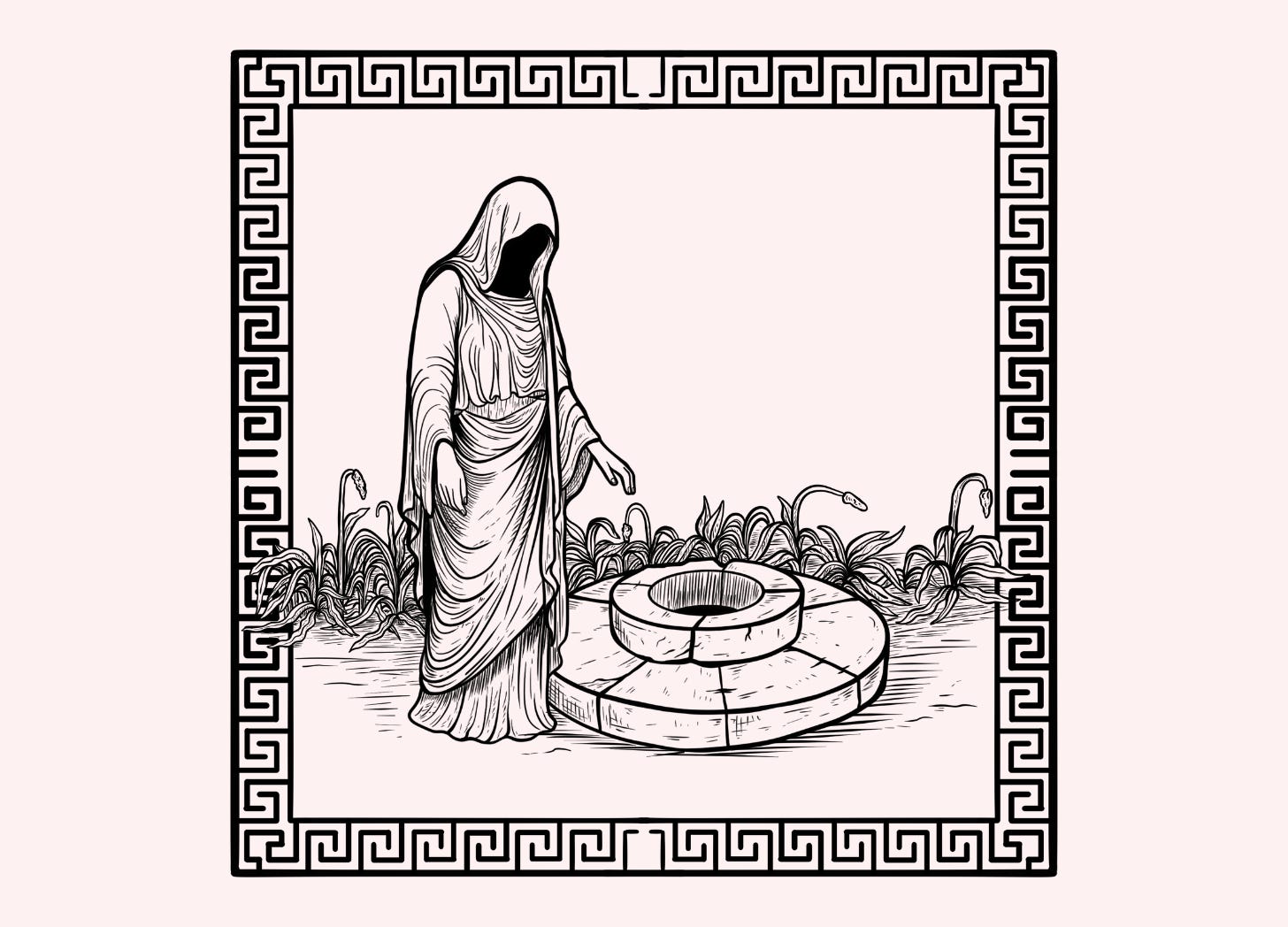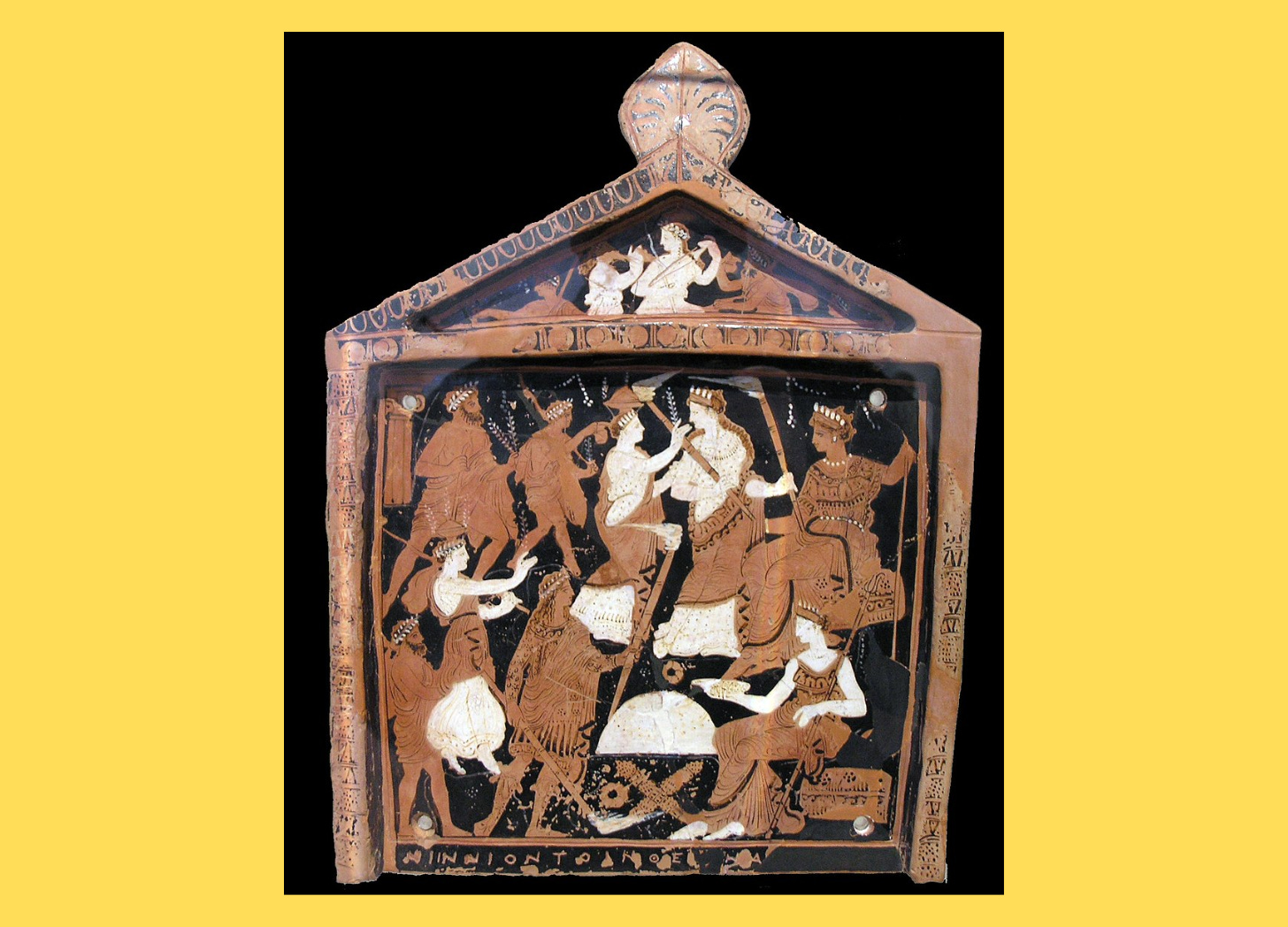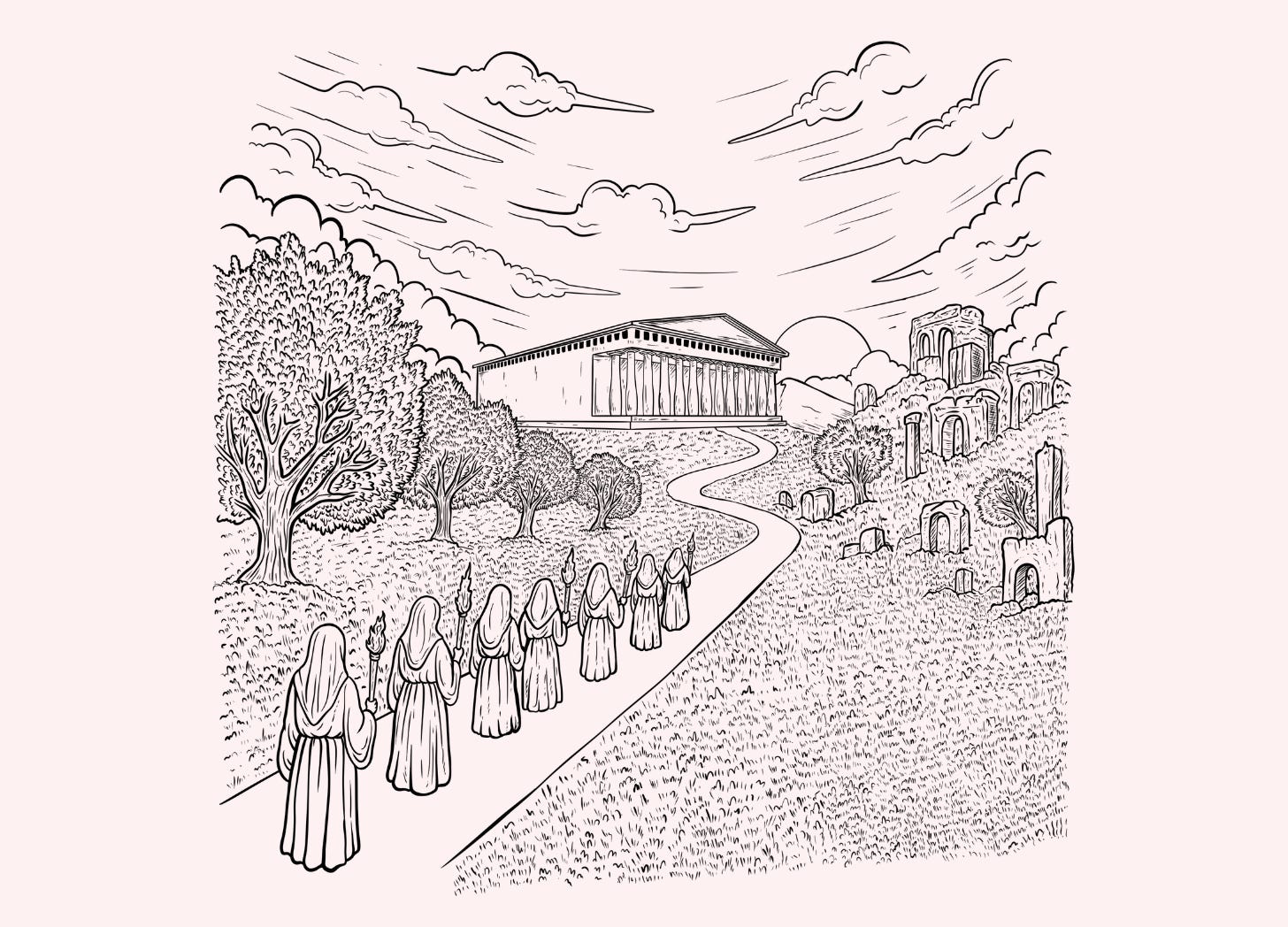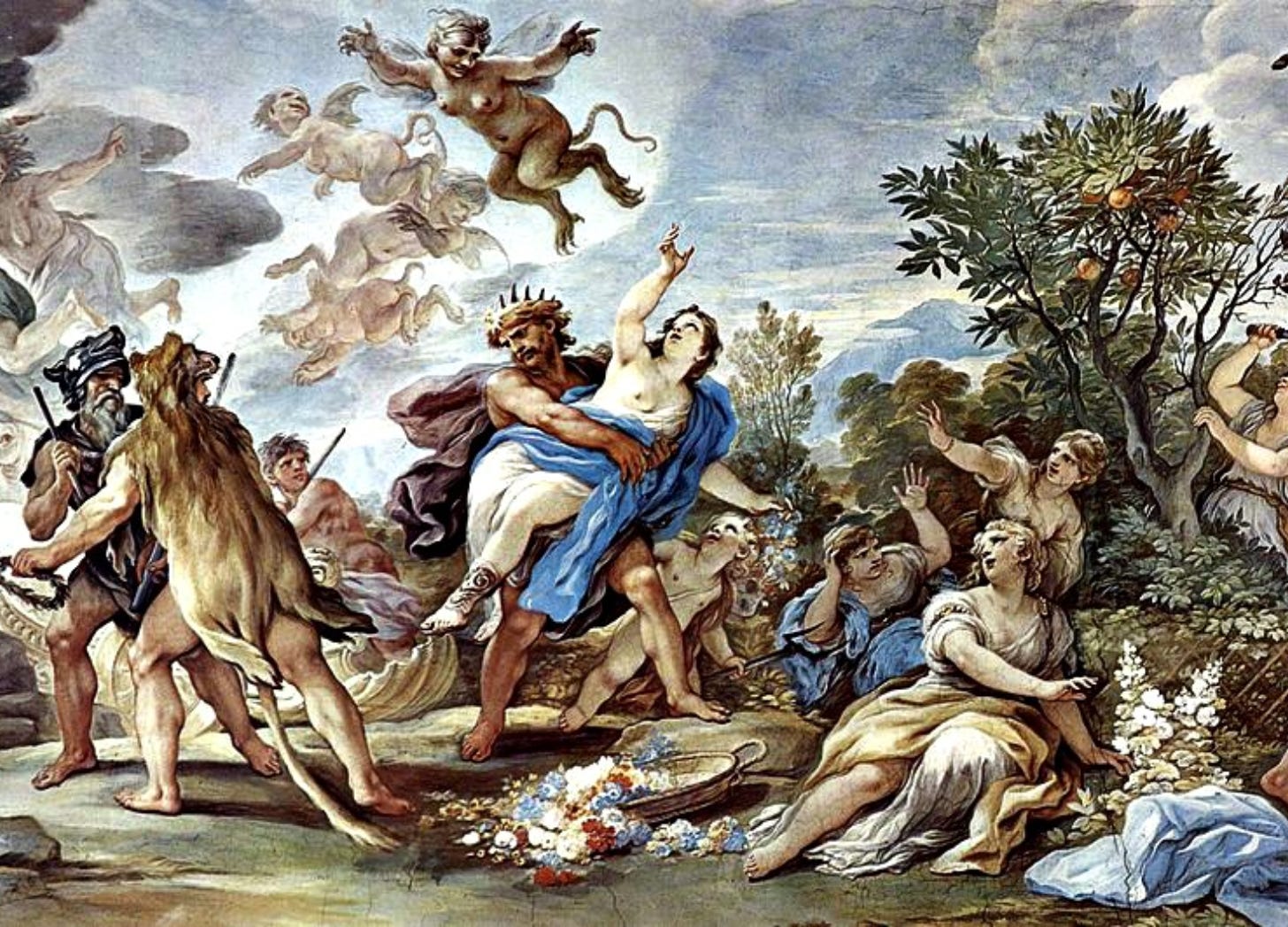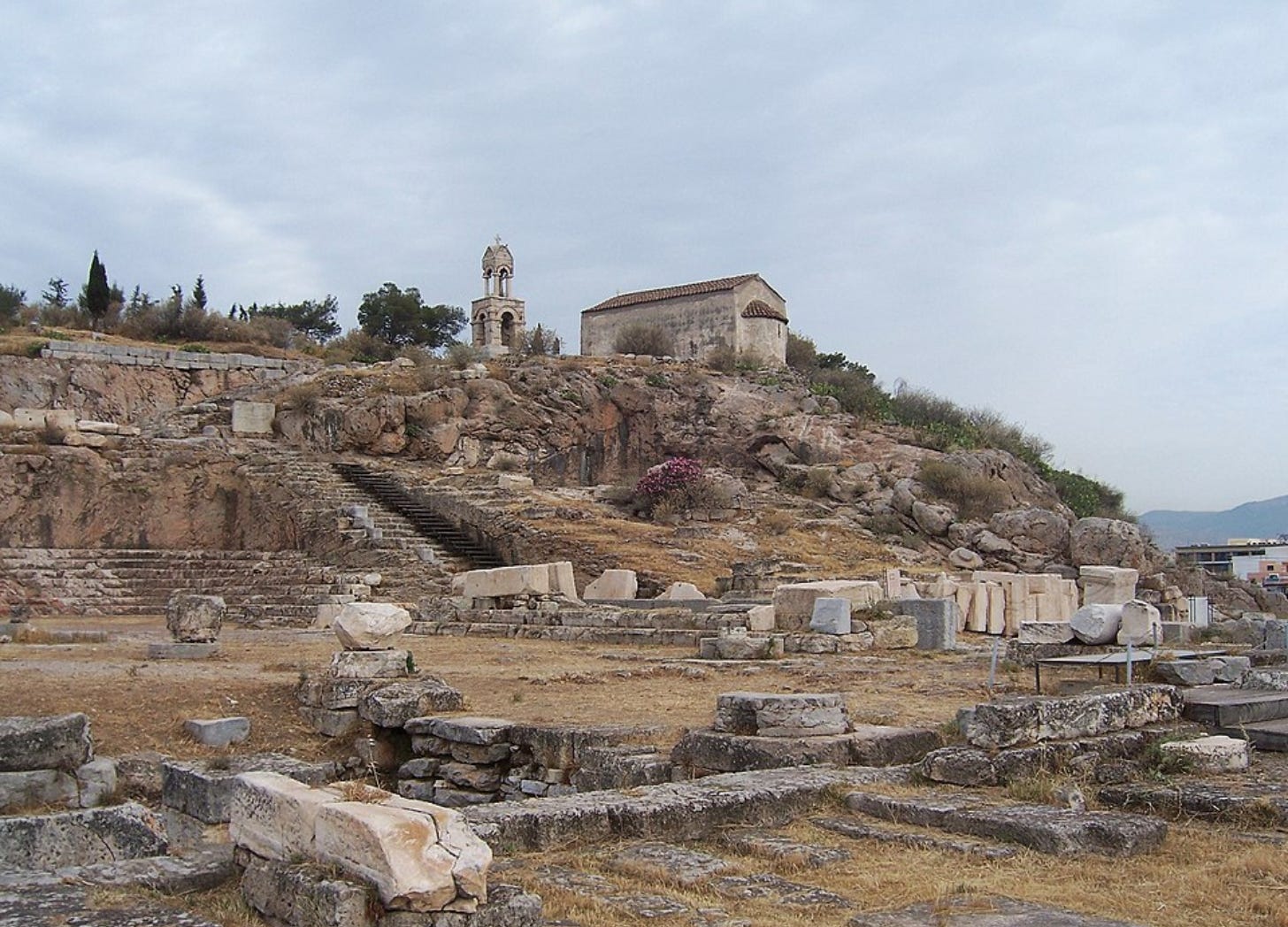The Ancient Cult That Conquered Death: Psychedelics & the Eleusinian Mysteries
For nearly 2,000 years, the ancient Greeks took part in a secret ritual said to dissolve the fear of death — all after drinking a mysterious brew called kykeon.
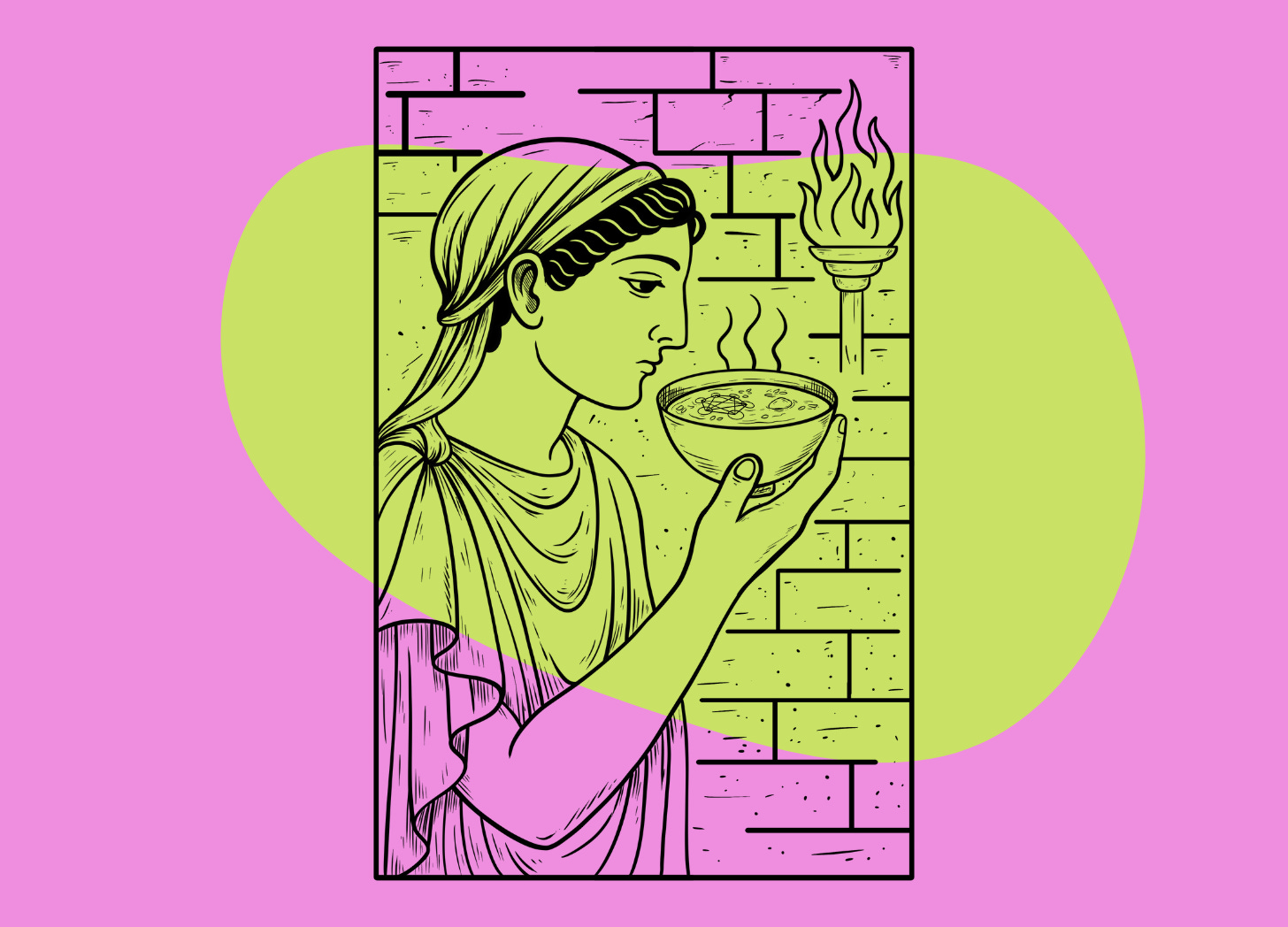
Each fall for nearly two millennia, a procession of seekers — men and women, slaves and rulers, foreigners and philosophers — walked the 14-mile Sacred Way from Athens to a small valley town called Eleusis.
There, beneath the stars and the stone columns of the Telesterion, they drank a secret potion, witnessed a mystery, and came out transformed.
Whatever happened inside the temple, it was powerful enough that Plato, Sophocles, and Marcus Aurelius swore by it — and terrifying enough that initiates took a death oath never to reveal its secrets.
At the heart of this ancient rite was a myth — the story of Demeter and Persephone, a tale of grief, abduction, descent, and return. But it was more than just a story. The Eleusinian Mysteries offered something else: a direct, visceral encounter with death and rebirth.
And possibly… a psychedelic one.
The Legend of Demeter & Persephone
"This wasn’t just a story — it was a ritual roadmap for dying before you die."
The Eleusinian Mysteries were based on the Myth of Demeter — the goddess of grain, fertility, and the living earth. Demeter's daughter, Persephone, was said to be painting every flower in the world. One day, as she was picking flowers, the ground split open.
Hades burst forth from the underworld in a black chariot, snatching her away before the petals hit the ground.
Demeter searched the world for her daughter. Wandering in disguise, she arrived in the humble town of Eleusis and rested by a well, posing as an old woman. Discovered by the daughters of the local king, she was brought into the palace and asked to care for the infant prince, Demophon.
Demeter tried to make the prince immortal by placing him in fire each night to burn away his mortal parts. When the queen walked in and screamed, Demeter revealed herself in divine fury. She demanded a temple be built in her honor… and refused to let the earth grow until her daughter was returned.
A great famine ensued, and many people died. This eventually forced Zeus to compromise.
Persephone was returned to her mother, but she had already tasted the fruit of the underworld and was forced to return to Hades each year.
This myth became the backbone of the Eleusinian Mysteries — a ritual reenactment of descent, death, and return to life.
At first, only members of Demeter’s cult were allowed in. But over time, the gates opened, and people came from all over the ancient world to walk the path of the goddess.
How Eleusis Became the Spiritual Heart of Greece
Before it became the heart of a sacred mystery cult, Eleusis was just a sleepy village by the sea.
Starting as a humble town around 2000 BCE — evidenced by houses, graves, and everyday objects — Eleusis gradually transformed into one of the most important religious sites in ancient history. By 1200 BCE, the Eleusinian Mysteries were already well-established, as shown on a vase depicting both the ritual and the mysterious brew kykeon.
The growing popularity of these secret rites led to multiple temple expansions over the centuries, beginning with two additions around 1300 BCE.
But popularity also brought danger.
In 480 BCE, Persian forces invaded Eleusis and razed the sanctuary to the ground.
In response, the Athenian general Kimon ordered a complete reconstruction of the temple — resulting in the creation of the Telesterion, a grand new ceremonial hall.
Completed by 450 BCE, the Telesterion was a massive 54-meter-square structure with two levels, capable of hosting thousands of initiates. It served not just as a spiritual center, but a political one as well — fortified with walls, guarded by sentries, and lit by countless lanterns during the rites, glowing so brightly it could be seen from miles away.
Sacred Rites, Sacred Rules
The Mysteries were state-sponsored and highly prestigious — but surprisingly inclusive. Anyone could join: men or women, slave or politician, Greek or foreigner.
The only requirements were that you could speak Greek and hadn’t committed murder.
This level of openness was rare in ancient religion, and may reflect the deeply personal, transformative nature of the rite.
Before entering the temple, each initiate — called a mystes — took a solemn oath of secrecy, with their names recorded on wooden tablets by temple priests. Breaking that oath wasn’t just frowned upon — it was punishable by death. There are several known cases where the Athenian state executed individuals for revealing details of the ceremony.
For nearly two thousand years, the inner workings of the Mysteries were fiercely protected. Only with the rise of Christianity did fragments of the ritual begin to leak into public record — and even then, only in whispers.
The Stages of The Mysteries
The Eleusinian Mysteries unfolded in two parts: the Lesser Mysteries, held in the spring, and the Greater Mysteries, a nine-day ceremony celebrated each fall.
The Lesser Mysteries took place along the east bank of the Ilissos River in Athens and served as a kind of spiritual preparation.
Participation wasn’t mandatory, but it likely involved ritual purification — fasting, sacrifice, sprinkling of sacred water, singing, and dance.
Exactly what happened during these rites remains unclear. Few records survive, and secrecy was strictly enforced.
But whatever was done in spring helped prepare initiates for what awaited them in the fall.
The Lesser Mysteries opened the door. The Greater Mysteries invited you to step through it.
The following sections explore the Greater Mysteries — the climactic nine-day ritual that transformed initiates and defined the Eleusinian tradition.
1. The Gathering of the Initiates
The Greater Mysteries began each year on the 17th of September, drawing pilgrims from across Greece and beyond. The ceremonies were launched by the hierophant — the high priest of Eleusis, whose title means “he who reveals the sacred things.”
On day one, the hierophant summoned the initiates to the Poikile Stoa, a colonnade in Athens adorned with paintings, relics, and spoils of war. From there, the ritual began.
On the second day, priestesses led a ritual procession to the sea, where each initiate purified a piglet in the waters of the Aegean.
The third day was devoted to sacrifices — though little else about the events of this day has survived.
The fourth day was reserved for latecomers. On this day, the story of Asklepios — a healing god and prince — was told or reenacted. According to legend, he took refuge in the Eleusinion, a sanctuary dedicated to Demeter and Persephone, while his permanent temple was being built nearby.
2. The Sacred March to Eleusis
On the fifth day, the mystes began their journey.
After fasting and bathing in the Aegean Sea, they dressed in ceremonial robes, crowned themselves with myrtle wreaths, and carried blazing torches as they prepared for the 14-mile walk from Athens to Eleusis.
The piglet each initiate had purified earlier was now sacrificed, its blood sprinkled over participants as a ritual offering.
The procession followed the Hiera Hodos — the Sacred Way — led by the hierophant and the hierophantides, two priestesses devoted to Demeter and Persephone.
Along the way, initiates stopped at shrines, sanctuaries, and altars marking key moments in the mythic landscape.
The journey itself was filled with symbolic acts. One of the first was Krokosis — where saffron-colored ribbons (krokos) were tied around each person’s right hand and left leg to ward off evil.
As they crossed the Kephissos River, initiates were mockingly insulted by bystanders — a ritual act meant to provoke laughter and lift the spirit through jest.
At midnight, the procession arrived in Eleusis. There, initiates gathered around the Kallichoron well, dancing and singing to console the grieving goddess.
On day six, fasting resumed. Initiates abstained from specific foods — fish, birds, beans, pomegranates, apples, and eggs — and performed additional sacrifices to Demeter on the altars outside the Telesterion, the great temple where the final mysteries awaited.
3. Kykeon: The Elixir Behind the Mystery
On day seven, the initiates broke their fast with a simple, sacred act — drinking kykeon. The ritual phrase that marked this moment was inscribed into the Mysteries themselves:
“I fasted. I drank the kykeon.”
But what exactly was kykeon?
In ancient Greece, the term referred to a range of grain-based drinks — sometimes porridge, sometimes a sickbed remedy, sometimes an intoxicant. Recipes varied, with mentions of barley, wine, herbs, and honey. In Homer’s Odyssey, kykeon is clearly mind-altering, hinting at a deeper power beneath its humble ingredients.
The theory that kykeon was psychoactive goes back to Nietzsche, who believed the visions reported by initiates couldn't be explained without some kind of chemical catalyst. He proposed it may have contained fermented barley and pennyroyal — a mint-like herb calming in low doses, but toxic at higher ones.
In the 20th century, R. Gordon Wasson (the first Westerner to participate in a magic mushroom ceremony) and Albert Hofmann (the inventor of LSD) proposed a bold theory — that kykeon was psychedelic beer.
The active agent?
Ergot, a psychoactive fungus that grows on barley and is the natural precursor to LSD. The same compound has been linked to historical mass hysterias — including the witch trials, the French Revolution, and the Pont-Saint-Esprit poisoning.
Other theories suggest the drink may have contained opium, pointing to Demeter’s association with poppies — the very flower Persephone was picking when she was abducted.
One final theory, championed by poet and mythologist Robert Graves, argues that kykeon was actually made from psilocybin-containing mushrooms. His claim? The effects reported by initiates sound distinctly entheogenic — and the mint drink Demeter consumed in the myth allegedly spells out “mushroom” in ancient Greek.
4. Inside the Temple: The Heart of the Mysteries
On the seventh night, after drinking the kykeon, the initiates entered the Telesterion — the heart of the Eleusinian sanctuary. This moment marked the true start of the Greater Mysteries.
What happened inside remains one of history’s best-kept secrets.
Early Christian writers, hostile to the old religions, claimed the rituals were orgiastic in nature — even inventing tales of underground chambers, though no such structures have ever been found.
Despite centuries of speculation by scholars, mystics, and archaeologists, the core of the Mysteries remains veiled in secrecy.
What we do know is that the ritual was divided into three parts:
The Dromena: What Was Enacted
Most scholars agree this portion involved a reenactment of the myth of Demeter and Persephone, performed at sacred sites throughout Eleusis. It likely culminated with the hierophant striking a gong, symbolizing Persephone’s return from the underworld.
The Legomena: What Was Explained
While the contents of this portion remain unknown, it was likely a short liturgical address from the hierophant, interpreting the symbolic meaning of the events just witnessed.
The Deiknymena: What Was Revealed
This was the climax. Sacred objects carried from Athens were unveiled to the initiates — their nature unknown to us — and then placed within the Anaktoron, the central chamber of the Telesterion. Only the hierophant was permitted to enter this space.
5. Closing Ceremonies
By the end of the rite, the mystes were no longer mere initiates — they had become epoptai, those who had “seen” — a transformation from blindness to spiritual vision.
The eighth day was dedicated to the dead. Each initiate held a ritual vase (plemochoai) in each hand — one facing east, the other west — and poured out libations in honor of the departed.
On the ninth and final day, the pilgrims quietly returned home.
There was no grand procession. No further obligation to Demeter. Just a sacred silence — and, for many, a life forever changed.
Who Were the Initiates of Eleusis?
As Terence McKenna once put it — “anyone who was anyone” in the ancient world made the journey to Eleusis.
Some pilgrims would travel from as far as Egypt, and famous historic figures such as Plato, Aristotle, and Pericles all participated in the ritual.
Here's what a few of them had to say:
"Thrice happy are those of the mortals who having seen those rites, depart for Hades; for to them alone is it granted to have true life on the other side. To the rest all there is evil," — Sophocles (Frag. 7I9)
“Now if it be true that the living come from the dead, then our souls must exist in the other world, for if not, how could they have been born again?” — Plato (Phaedo, 70)
"All who use such rites experience relief mixed with pleasure." — Aristotle, (Poetics, Chapter 17)
The Mysteries were more than just a rite of passage — they were considered a rehearsal for death, and a glimpse of something beyond it.
The Fall of Eleusis & The Echo That Remains
As Christianity gained power in the fourth and fifth centuries, the once-revered Eleusinian Mysteries began to fade.
Public support dwindled. Imperial protection vanished. In 392 CE, Emperor Theodosius I officially shut down the Mysteries as part of a wider crackdown on pagan traditions.
Just four years later, in 396 CE, the Telesterion was looted and destroyed by the Visigoths — ending a tradition that had lasted nearly two thousand years.
The Eleusinian Mysteries were the largest religious ceremonies in the ancient world — a rite so sacred that its inner workings were protected for generations by both law and fear.
And while we may never know exactly what happened inside the Telesterion — the inner sanctum of Demeter’s rites — detail remains consistent across time: initiates emerged changed. They spoke of losing their fear of death — and of seeing the world with new eyes.
Whether or not the Mysteries involved psychedelics will likely never be proven. But the parallels to modern psychedelic experiences — ego death, visionary states, the embrace of mortality — are impossible to ignore.
Many emerged with a calm conviction that death was not the end — as if they’d glimpsed something eternal, even ineffable.
Today, as we revisit ancient medicines and seek new ways to approach the great unknown, the Eleusinian Mysteries offer more than historical curiosity.
They remind us of the power of ritual, the importance of initiation, and the human need to make peace with the end of things.
Even in silence, Eleusis still speaks.
Further Reading
The Road to Eleusis: Unveiling the Secret of the Mysteries (R Gordon Wasson)
The Immortality Key: The Secret History of the Religion with No Name (Brian C. Muraresku)
The Eleusinian Mysteries and Rites (Dudley Wright)
Bicycle Day (April 19): The First Acid Trip in Human History
Amazon Legends: Tricksters, Shapeshifters, & Other Jungle Secrets
A Pinch of Salt, A Pound of Prohibition: The History of Drug Control With Vincent Rado (Tripsitter Podcast)
Enjoying Tripsitter? 🍄
Don’t Journey Alone! Tripsitter was built by a community of psychedelic advocates — but it’s people like you that allow us to thrive.
You can also follow us on Bluesky or subscribe to our Reddit.





